Category
Popular Articles
- AI (12)
- Android (38)
- App Suggest (4)
- Apple (15)
- Apple TV (2)
- Bluetooth (3)
- Cars (2)
- ChatGpt (1)
- Chrome (2)
- Did you know? (1)
- E-Commerce News (1)
- Ecommerce Websites business (7)
- Electronics Shopping (5)
- Fashion Tips (3)
- Gaming (4)
- Google Gemini (3)
- Hair Care Tips (2)
- How to (13)
- iCloud (1)
- Infotainment System (1)
- Iphone (101)
- Job Posting (1)
- Lifestyle (3)
- Mac (20)
- Mobile Games (1)
- Netflix (1)
- Online Shopping Websites (2)
- Personal Finance Management (3)
- Product Reviews (3)
- Roku TV (4)
- Samsung (9)
- Shopping Tips (10)
- Spotify (1)
- Tech (92)
- Windows 11 (18)
- Zero Waste (3)
Discounted Products
-
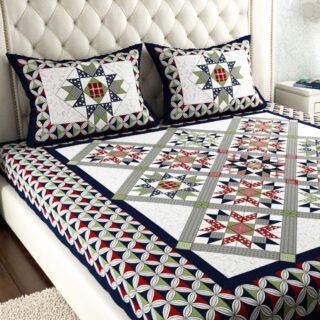 Leo Creation 144 TC Cotton Double Jaipuri Prints Flat Bedsheet(Pack of 1, Blue, Gree, Red, Grey, Light Grey)
Leo Creation 144 TC Cotton Double Jaipuri Prints Flat Bedsheet(Pack of 1, Blue, Gree, Red, Grey, Light Grey)
₹2,999.00Original price was: ₹2,999.00.₹329.00Current price is: ₹329.00. -
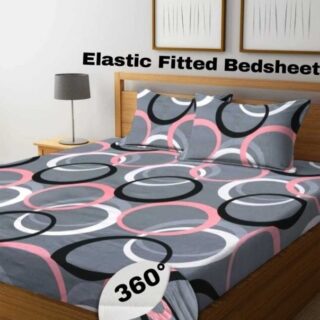 Home Garage 210 TC Cotton King Floral Fitted (Elastic) Bedsheet(Pack of 1, Grey)
Home Garage 210 TC Cotton King Floral Fitted (Elastic) Bedsheet(Pack of 1, Grey)
₹999.00Original price was: ₹999.00.₹299.00Current price is: ₹299.00. -
 Goodrik 140 TC Cotton Double 3D Printed Flat Bedsheet(Pack of 1, Brown)
Goodrik 140 TC Cotton Double 3D Printed Flat Bedsheet(Pack of 1, Brown)
₹499.00Original price was: ₹499.00.₹229.00Current price is: ₹229.00. -
 GLOBALSHOP 350 TC Microfiber Double Floral Flat Bedsheet(Pack of 1, Multicolor)
GLOBALSHOP 350 TC Microfiber Double Floral Flat Bedsheet(Pack of 1, Multicolor)
₹1,250.00Original price was: ₹1,250.00.₹263.00Current price is: ₹263.00. -
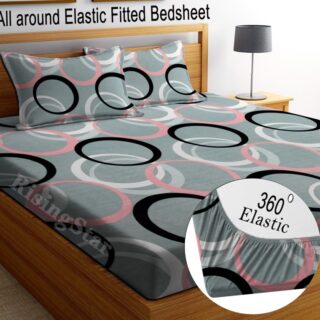 RisingStar 250 TC Microfiber King Printed Fitted (Elastic) Bedsheet(Pack of 1, FITTED-ROUND-CIRCLES-PREMIUM)
RisingStar 250 TC Microfiber King Printed Fitted (Elastic) Bedsheet(Pack of 1, FITTED-ROUND-CIRCLES-PREMIUM)
₹2,299.00Original price was: ₹2,299.00.₹299.00Current price is: ₹299.00. -
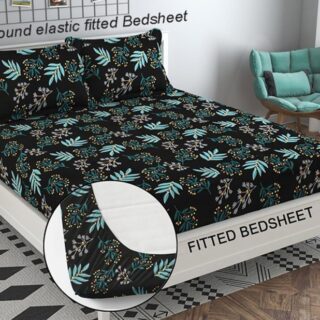 Home Garage 210 TC Cotton King Floral Fitted (Elastic) Bedsheet(Pack of 1, Fitted Black Green)
Home Garage 210 TC Cotton King Floral Fitted (Elastic) Bedsheet(Pack of 1, Fitted Black Green)
₹1,299.00Original price was: ₹1,299.00.₹299.00Current price is: ₹299.00. -
 Home Garage 180 TC Cotton King 3D Printed Flat Bedsheet(Pack of 1, White)
Home Garage 180 TC Cotton King 3D Printed Flat Bedsheet(Pack of 1, White)
₹999.00Original price was: ₹999.00.₹229.00Current price is: ₹229.00. -
 Home Sizzler 153 cm (5 ft) Polyester Room Darkening Window Curtain (Pack Of 2)(Floral, Maroon)
Home Sizzler 153 cm (5 ft) Polyester Room Darkening Window Curtain (Pack Of 2)(Floral, Maroon)
₹799.00Original price was: ₹799.00.₹299.00Current price is: ₹299.00. -
 Panipat Textile Hub 152.4 cm (5 ft) Polyester Window Curtain (Pack Of 2)(Solid, Aqua)
Panipat Textile Hub 152.4 cm (5 ft) Polyester Window Curtain (Pack Of 2)(Solid, Aqua)
₹1,899.00Original price was: ₹1,899.00.₹299.00Current price is: ₹299.00. -
 Home Sizzler 214 cm (7 ft) Polyester Semi Transparent Door Curtain (Pack Of 2)(Floral, Maroon)
Home Sizzler 214 cm (7 ft) Polyester Semi Transparent Door Curtain (Pack Of 2)(Floral, Maroon)
₹1,199.00Original price was: ₹1,199.00.₹399.00Current price is: ₹399.00. -
 Home Sizzler 153 cm (5 ft) Polyester Room Darkening Window Curtain (Pack Of 2)(Floral, Brown)
Home Sizzler 153 cm (5 ft) Polyester Room Darkening Window Curtain (Pack Of 2)(Floral, Brown)
₹799.00Original price was: ₹799.00.₹299.00Current price is: ₹299.00. -
 Stella Creations 214 cm (7 ft) Polyester Room Darkening Door Curtain (Pack Of 2)(Abstract, Brown)
Stella Creations 214 cm (7 ft) Polyester Room Darkening Door Curtain (Pack Of 2)(Abstract, Brown)
₹1,299.00Original price was: ₹1,299.00.₹449.00Current price is: ₹449.00. -
 Homefab India 152.5 cm (5 ft) Polyester Room Darkening Window Curtain (Pack Of 2)(Floral, Light Blue)
Homefab India 152.5 cm (5 ft) Polyester Room Darkening Window Curtain (Pack Of 2)(Floral, Light Blue)
₹1,199.00Original price was: ₹1,199.00.₹319.00Current price is: ₹319.00. -
 Urban Home 214 cm (7 ft) PVC Transparent Door Curtain Single Curtain(Solid, Off White)
Urban Home 214 cm (7 ft) PVC Transparent Door Curtain Single Curtain(Solid, Off White)
₹699.00Original price was: ₹699.00.₹203.00Current price is: ₹203.00. -
 Panipat Textile Hub 213 cm (7 ft) Polyester Door Curtain (Pack Of 2)(Solid, Brown)
Panipat Textile Hub 213 cm (7 ft) Polyester Door Curtain (Pack Of 2)(Solid, Brown)
₹1,199.00Original price was: ₹1,199.00.₹349.00Current price is: ₹349.00.
Affiliate Links
Promotion
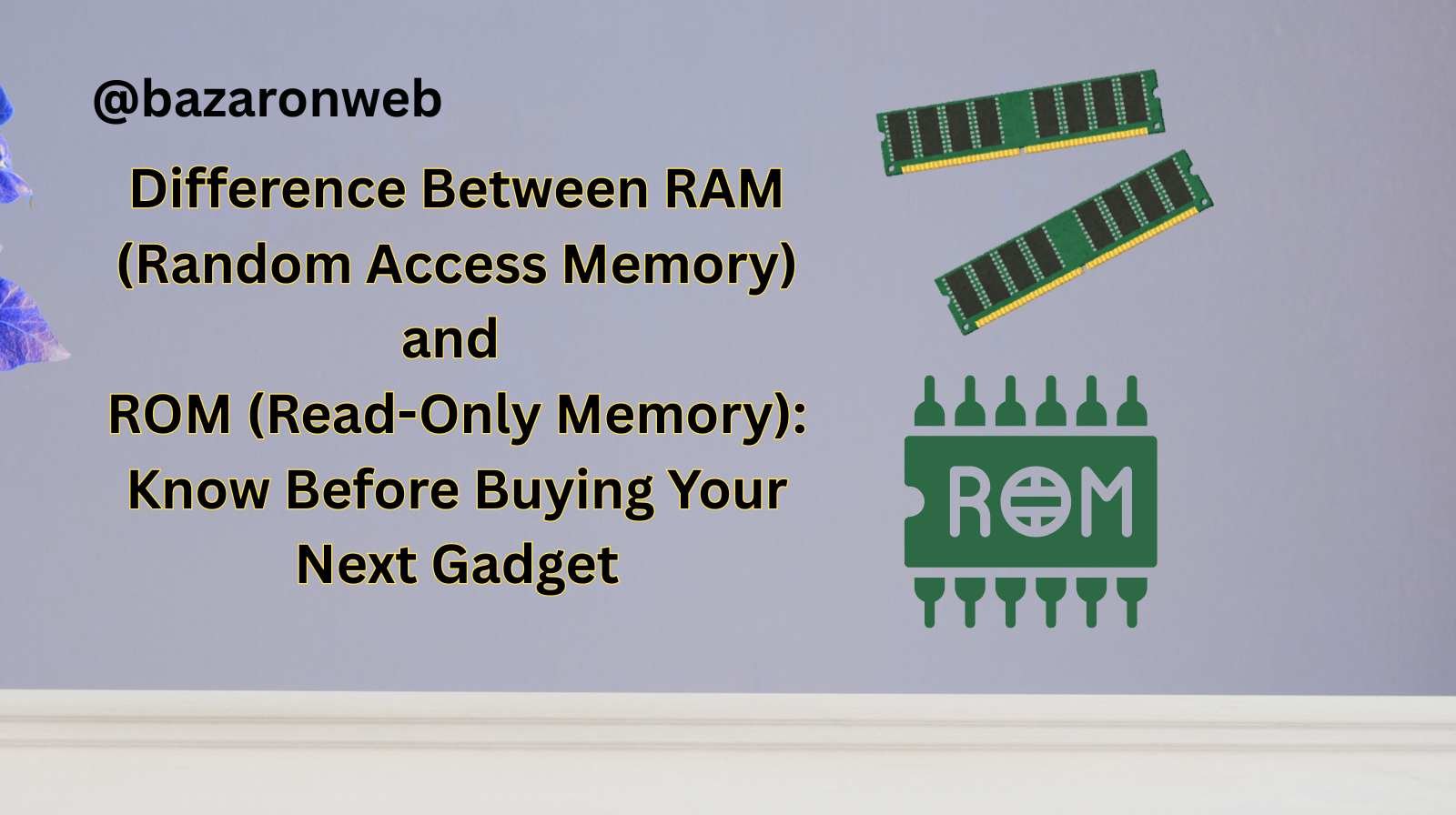
As a mom, professional, and tech enthusiast, I often find myself comparing new gadgets before making a purchase—whether it’s a new iPhone for work, a tablet for my kids’ education, or even a laptop for home projects. One of the most confusing things I see people struggle with is the difference between RAM and ROM.
At first glance, these two terms may sound similar, but they serve very different purposes. And understanding them can really help you make smarter buying decisions. Let me walk you through the basics (and some advanced details) so that next time you’re shopping for a gadget, you’ll know exactly what you’re looking at.
What Is RAM?
RAM stands for Random Access Memory. Think of it like your gadget’s short-term memory. It’s the workspace your device uses to keep everything running smoothly while you’re actively using it.
For example:
- When you open apps on your smartphone, RAM keeps them running in the background.
- When you edit a photo or play a game, RAM temporarily stores the data so the processor can access it quickly.
Key Characteristics of RAM:
- Volatile memory: Data in RAM is temporary. It disappears as soon as you shut down or restart your device.
- Speed: RAM is incredibly fast compared to storage memory (like your hard drive or SSD).
- Capacity matters: The more RAM you have, the more apps and processes your device can handle at the same time.
What Is ROM?
ROM stands for Read-Only Memory. Unlike RAM, ROM is your device’s long-term memory. It permanently stores critical instructions and, in many gadgets, is also used as internal storage.
Key Characteristics of ROM:
- Non-volatile memory: Data in ROM remains even when the device is powered off.
- Primary use: ROM is often used to store the firmware (the basic instructions that allow your device to boot up).
- Storage capacity: In smartphones and laptops, “ROM” is also used interchangeably to mean internal storage—like 128GB, 256GB, or 1TB.
RAM vs ROM: Side-by-Side Comparison
Here’s a simple table to break it down:
| Feature | RAM (Random Access Memory) | ROM (Read-Only Memory) |
|---|---|---|
| Purpose | Short-term, temporary data storage | Long-term, permanent data storage |
| Volatility | Volatile (data erased when powered off) | Non-volatile (data remains after shutdown) |
| Speed | Much faster | Slower compared to RAM |
| Capacity Range | 2GB to 32GB (phones/laptops) | 64GB to 1TB+ (storage in devices) |
| Examples of Use | Running apps, multitasking, browsing | Operating system, app files, user data |
Why RAM Matters When Buying a Gadget
Imagine cooking dinner with two kids running around. You have your recipe book (ROM) for reference, but your kitchen counter space (RAM) determines how many dishes you can prepare at the same time.
That’s how RAM works—it doesn’t store everything forever, but it allows your device to multitask effectively.
How Much RAM Do You Really Need?
- Smartphones:
- Basic use (calls, browsing, social media): 4GB–6GB
- Heavy use (gaming, multitasking, productivity): 8GB–12GB
- Laptops:
- Everyday tasks: 8GB
- Professional work (design, video editing, coding): 16GB–32GB
💡 Tip: Always go for a device with more RAM if you multitask a lot—it keeps things smooth and prevents lag.
Why ROM (Storage) Matters
ROM determines how many apps, files, videos, and photos your gadget can store. While cloud storage (like iCloud or Google Drive) is popular, having enough internal storage is still essential.
How Much ROM Do You Need?
- Smartphones:
- Light use: 64GB (but fills up quickly with photos and videos).
- Moderate use: 128GB–256GB (sweet spot for most users).
- Heavy use: 512GB or 1TB (great for creators, gamers, or those storing offline movies/music).
- Laptops/Tablets:
- Everyday use: 256GB
- Work/creative projects: 512GB–1TB
💡 Tip: If you have kids like me, you know how quickly photos and videos can fill up storage. Always choose more ROM if you’re unsure—you’ll thank yourself later.
Real-Life Example: Choosing a Smartphone
Let’s say you’re comparing two phones:
- Phone A: 6GB RAM, 128GB ROM
- Phone B: 8GB RAM, 64GB ROM
Which should you choose?
- If you multitask a lot, Phone B will run faster because of more RAM.
- If you store tons of photos, apps, and files, Phone A is better for storage.
Ideally, you want a balance of both—but knowing the difference helps you prioritize based on your lifestyle.
Common Misconceptions About RAM and ROM
- “More RAM means faster performance overall.”
Not always—your processor and software optimization also matter. - “ROM only means system memory.”
In smartphones, manufacturers often use ROM to mean internal storage capacity. - “You can upgrade both RAM and ROM.”
Not always—many modern smartphones don’t allow upgrades, so choose wisely when buying.
How RAM and ROM Work Together
Think of RAM and ROM as two teammates:
- RAM gives your device the speed and flexibility to juggle multiple tasks.
- ROM ensures you can store apps, files, and the operating system securely.
A device with high RAM but very little ROM won’t be practical—you’ll run out of space. On the other hand, tons of ROM but very little RAM means your device will struggle with speed. Balance is key.
Future of RAM and ROM
Technology is always evolving. Some trends to watch:
- LPDDR5 RAM: Faster, more energy-efficient RAM coming to new phones and laptops.
- UFS 4.0 storage: Quicker and more efficient than older flash storage, making file access much faster.
- Cloud + Local storage mix: Many users will rely on a combination of cloud and ROM for flexibility.
Final Thoughts
Understanding the difference between RAM (Random Access Memory) and ROM (Read-Only Memory) is more than just tech jargon—it’s about making the best choice for your needs.
For me, as a busy mom and professional, I need enough RAM to run multiple apps smoothly while managing work and family, and enough ROM to store everything from marketing files to my kids’ videos.
When you’re buying your next gadget—whether it’s a smartphone, tablet, or laptop—don’t just look at the camera or design. Pay close attention to the RAM and ROM specifications. A good balance between the two ensures your device will be fast, reliable, and spacious enough to keep up with your daily life.
Written by Bazaronweb
Latest Tech Articles
- 5 Ways to Backup and Restore Registry Settings in Windows

- iMessage Not Syncing Between iPhone & Mac? 8 Proven Ways to Fix Account & Device Issues

- Outlook Not Receiving Emails? 8 Proven Fixes for Windows, Mac & Mobile

- Zoom Not Connecting? 7 Ways to Fix Meeting Join Errors on Windows & Mac

- Microsoft Teams Not Opening? 5 Proven Fixes to Restart Your Workspace

Products
-
![Apple Watch Ultra 3 [GPS + Cellular 49mm] Running & Multisport Smartwatch w/Rugged Titanium Case w/Black Titanium Milanese Loop - M. Satellite Communications, Advanced Health & Fitness Tracking](https://bazaronweb.com/retailstores/wp-content/uploads/2025/09/apple-watch-320x320.jpg) Apple Watch Ultra 3 [GPS + Cellular 49mm] Running & Multisport Smartwatch w/Rugged Titanium Case w/Black Titanium Milanese Loop - M. Satellite Communications, Advanced Health & Fitness Tracking
Apple Watch Ultra 3 [GPS + Cellular 49mm] Running & Multisport Smartwatch w/Rugged Titanium Case w/Black Titanium Milanese Loop - M. Satellite Communications, Advanced Health & Fitness Tracking
-
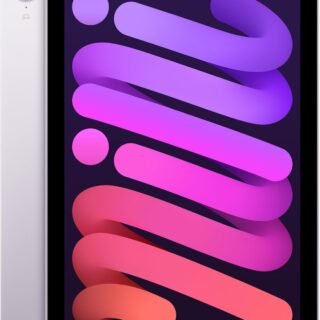 Apple iPad mini (A17 Pro): Apple Intelligence, 8.3-inch Liquid Retina Display, 256GB, Wi-Fi 6E, 12MP Front/12MP Back Camera, Touch ID, All-Day Battery Life — Purple
Apple iPad mini (A17 Pro): Apple Intelligence, 8.3-inch Liquid Retina Display, 256GB, Wi-Fi 6E, 12MP Front/12MP Back Camera, Touch ID, All-Day Battery Life — Purple
-
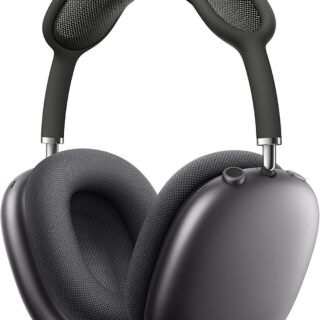 Apple AirPods Max Wireless Over-Ear Headphones, Active Noise Cancelling, Transparency Mode, Personalized Spatial Audio, Dolby Atmos, Bluetooth Headphones for iPhone – Space Gray
Apple AirPods Max Wireless Over-Ear Headphones, Active Noise Cancelling, Transparency Mode, Personalized Spatial Audio, Dolby Atmos, Bluetooth Headphones for iPhone – Space Gray
-
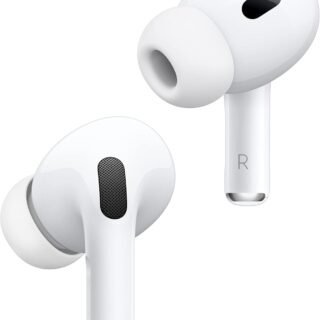 Apple AirPods Pro 2 Wireless Earbuds, Active Noise Cancellation, Hearing Aid Feature, Bluetooth Headphones, Transparency, Personalized Spatial Audio, High-Fidelity Sound, H2 Chip, USB-C Charging
Apple AirPods Pro 2 Wireless Earbuds, Active Noise Cancellation, Hearing Aid Feature, Bluetooth Headphones, Transparency, Personalized Spatial Audio, High-Fidelity Sound, H2 Chip, USB-C Charging
-
 Leo Creation 144 TC Cotton Double Jaipuri Prints Flat Bedsheet(Pack of 1, Blue, Gree, Red, Grey, Light Grey)
Leo Creation 144 TC Cotton Double Jaipuri Prints Flat Bedsheet(Pack of 1, Blue, Gree, Red, Grey, Light Grey)
₹2,999.00Original price was: ₹2,999.00.₹329.00Current price is: ₹329.00.
Leave a Reply